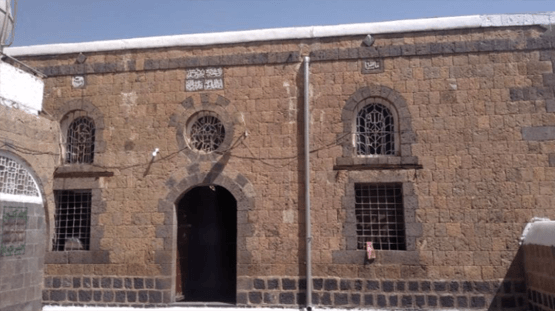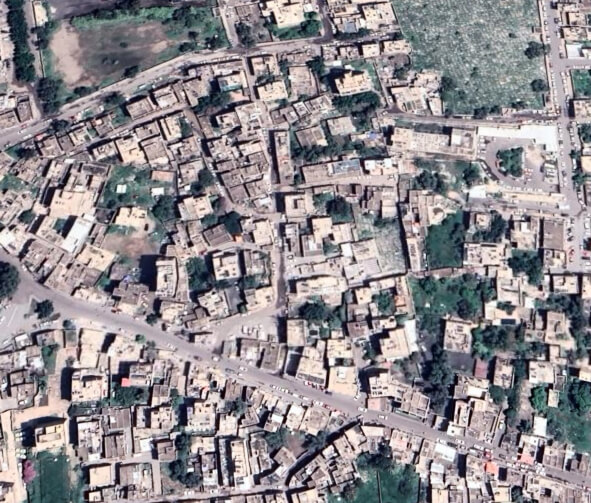
Al-Raḥmah Mosque – Ṣan‘ā’
مسجد الرحمة- صنعاء
Monument description
The Al-Rahmah Mosque in the Bir Al-Shams – Bir Al-Azab district of Sana‘a City is considered historical and active Mosque on the northwestern side of Tahrir Square, specifically in Bir Al-Shams neighborhood, within the Bir Al-Azab neighborhood of Tahrir Directorate. The history of the Mosque goes back to the year 1359 AH, according to the text of the foundation in the southern wall of the Mosque, above the entrance.

Architectural and cultural value
Construction style and built date: The layout of this Mosque belongs to the style of mosques with a Prayer Hall covered by a flat roof of wooden beams resting directly on the capitals of stone columns and arches. This monument was built in the year 1359 AH.
Components of the Mosque: The Prayer Hall (the structure). The western Prayer Hall, the outer courtyard (Al-Souh), the external Iwan overlooking the courtyard, the Al-Mataher (lighthouses), the bathrooms and the well. The Mosque (under the ground), the first level (ground floor), the second level (upper floor), the women’s Prayer Hall (upper floor). And annexes to the women’s Prayer Hall (bathrooms and kitchen).
- Justifications for intervention:
- 1. Neglecting the competent authorities in carrying out periodic restoration work due to the lack of budgets for the repairs
- 2. Preserving the monument from disappearance and stopping the damage caused to the monument from expanding
- 3. Restoration of the damage to the Mosque resulting from the flight strikes in the Old City of Sana‘a
- 4. Contribute to the restoration of damaged monuments in a proper manner in order to keep Old Sana‘a in the World Heritage List.
- Monument conditions:
- Damages resulting from the old building or building and time factors, damages resulting from wrong repairs, damages resulting from previous poor restoration, and damages resulting from water leakage into the mosque, and these damages include.
1 – Existence and cracking of a substance, Qadad in the water pool and walls and surfaces.
2 – Cracks on the roof of the prayer house.
3 – The problem of simple subsidence, moisture and salinity in the foundations.
4 – The collapse of some parts of the stone walls of the settlements and the northern gate of the pond
- Treatment:
- – Restoration and re-layer Alqodd in the affected places.Re-dressing and making a coast to drain rainwater on the northern facade.
– Reconstruct the dilapidated walls.
– stop longitudinal cracks
– Treating damaged foundations and solving the problem of moisture.
– Treating roofs and preventing rainwater intrusion.

Countries









